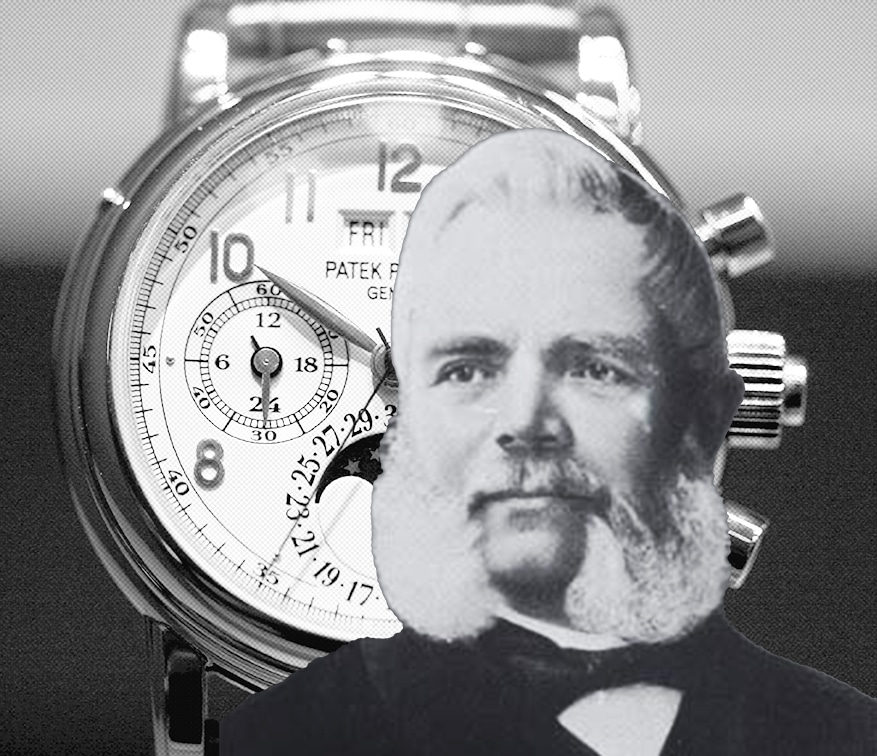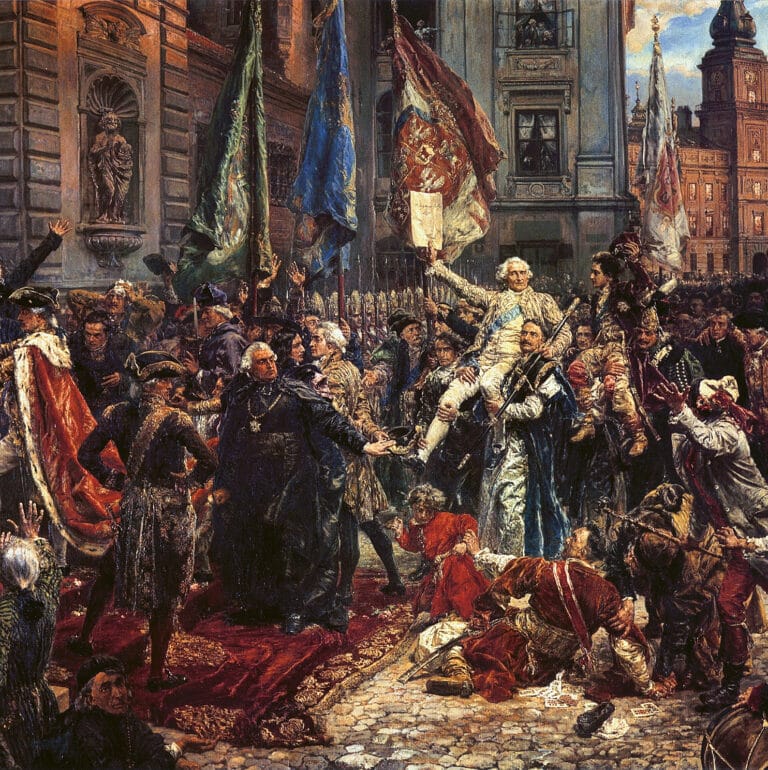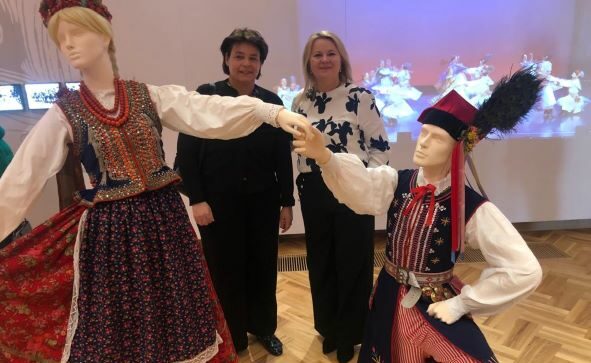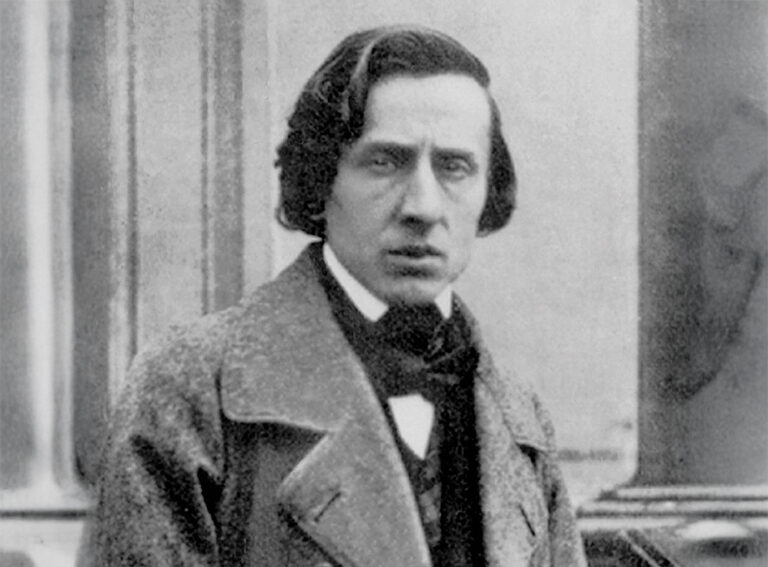Antoni Patek
Patek Philippe watches are synonymous with luxury and prestige, and the company he founded continues to uphold his legacy by blending tradition with modernity.
Antoni Patek is not just the founder of one of the world’s most prestigious watchmaking brands, Patek Philippe, but a figure whose life story is a testament to resilience and success against the odds. Born into a noble family, Patek’s legacy extends far beyond his contributions to horology—he became an emblem of Polish patriotism, philanthropy, and political engagement, a role model for the Polish diaspora. Today, Patek Philippe watches are synonymous with luxury and prestige, with the company he founded continuously upholding his legacy by blending tradition with modernity.
Antoni Patek was born on June 14, 1812, in Piaski Szlacheckie, in the Lublin region of Poland, to a noble family of the Prawdzic coat of arms. His early years marked by patriotism and courage, Patek initially chose a military career, joining the 1st Regiment of the Augustów Cavalry in Warsaw in 1828. He participated in the November Uprising, where he was wounded twice, and for his efforts, he was promoted to lieutenant and awarded the Gold Cross of the Virtuti Militari Order.
After the failure of the Uprising in 1831, Patek fled to France, where he spent two years working as a typesetter. In Paris, he befriended other Polish intellectuals and national activists, including Adam Mickiewicz and Joachim Lelewel. However, due to economic challenges and limited opportunities for political action, Patek moved to Switzerland in 1833, eventually settling in Geneva. There, he became one of the most active Polish emigrants, supporting Polish independence efforts through financial backing for Polish publications, Swiss independence organizations, and helping Polish refugees arriving in Switzerland.
While initially involved in the wine and spirits trade, Patek soon shifted his focus to watchmaking after discovering Geneva’s reputation as the world capital of horology. He became fascinated by the craftsmanship of Swiss watchmakers, quickly immersing himself in the art of watch construction. By 1839, he established Patek, Czapek & Co. with fellow Czech emigrant, Franciszek Czapek. The company specialized in luxury pocket watches adorned with patriotic motifs, primarily purchased by affluent Polish expatriates.
As the business thrived, Patek and Czapek expanded, employing Polish watchmakers like Władysław Bandurski and Wincenty Gostkowski. However, after meeting French watchmaker Adrien Philippe in 1844 at the French Industrial Exhibition in Paris, Patek decided to sever ties with the conservative Czapek and founded a new watchmaking house in 1845, where Philippe became the technical director. This marked the beginning of Patek’s venture into innovation, particularly with Philippe’s crown-winding mechanism, which replaced the traditional key-wound system.
In 1851, Patek Philippe & Co. was officially established, with a vision of creating the world’s most exclusive timepieces. The brand’s first major success came in the same year at the Great Exhibition in London, where it was awarded a gold medal, and Queen Victoria purchased one of their watches. From then on, Patek Philippe became synonymous with elegance, attracting global aristocracy. In 1868, the company produced the world’s first wristwatch for the Hungarian Duchess Kocewicz, a groundbreaking innovation at the time.
Throughout his life, Patek remained deeply involved in the Polish independence movement, supporting both the organizers of the Spring of Nations and the participants of the failed January Uprising. His religious devotion also influenced the aesthetics of his watches, with many featuring sacred motifs and commissioned by clergy members. For his contributions to the Catholic community in Geneva, Pope Pius IX granted him a countship.
Patek Philippe watches became highly coveted, worn by figures such as Queen Victoria and Prince Albert, Zygmunt Krasiński, Pyotr Tchaikovsky, Leo Tolstoy, Maria Skłodowska-Curie, Albert Einstein, Niels Bohr, Pope Pius IX, Pope Leo XIII, Walt Disney, Duke Ellington, and Pope John Paul II.
In 2019, the most expensive Patek Philippe watch ever sold, the Grandmaster Chime Ref. 6300A, fetched $31 million at a Geneva auction. The Patek Philippe Museum in Geneva, located in a historic early 20th-century building, has been a showcase for the brand’s 500-year history of horological craftsmanship since it opened in 2001.
Antoni Patek passed away on March 1, 1877, in Geneva. After his death, the company changed ownership several times, and since 1929, it has been owned by the Stern family, who still own it today, making it one of the few independent luxury watchmaking houses.
Patek’s legacy endures not only in the form of a world-renowned watchmaking brand but also as an immigrant who overcame adversity to achieve international success. His political, patriotic, and philanthropic activities have made him a symbol of horological excellence and a role model for the Polish diaspora. Today, Patek Philippe remains synonymous with luxury and prestige, perpetuating Patek’s legacy by blending tradition with modernity.







